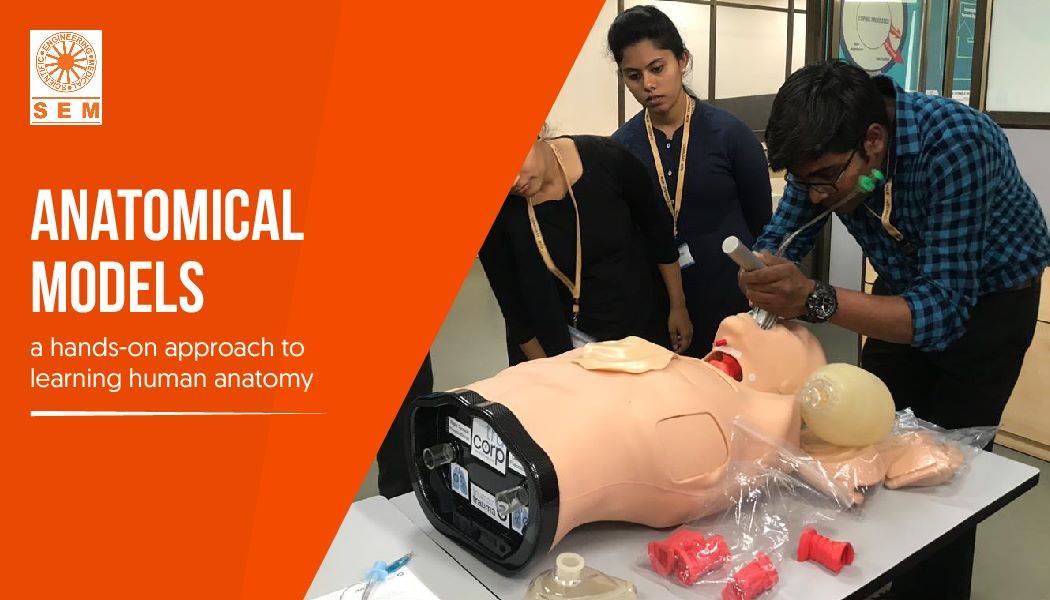Anatomical Model: A hands-on-approach to learning Human Anatomy
We’ll get to learn about Anatomical Models today. Human anatomy is a fascinating subject that plays a crucial role in various fields, including medicine, biology, and healthcare. Understanding the intricacies of the human body can be challenging, but with the help of anatomical models, learning becomes more accessible and engaging. Anatomical models are educational tools that provide a hands-on approach to studying human anatomy. In this blog post, we will explore the benefits of using anatomical models, how they enhance the learning experience, and why they are considered invaluable resources for students, healthcare professionals, and enthusiasts alike.
Benefits of Anatomical Models:
Anatomical models offer several advantages over traditional learning methods, such as textbooks or two-dimensional illustrations. Here are some key benefits:
Benefits of Anatomical Models:
Anatomical models offer several advantages over traditional learning methods, such as textbooks or two-dimensional illustrations. Here are some key benefits:
- Visual Representation: Anatomical models provide a three-dimensional representation of the human body, allowing learners to visualize and understand complex anatomical structures accurately. This visual aspect aids in memory retention and comprehension.
- Hands-On Experience: Unlike passive learning methods, anatomical models encourage hands-on exploration. By physically interacting with the models, learners can develop a tactile understanding of human anatomy, enhancing their grasp of the subject matter.
- Interactive Learning: Anatomical models often come with movable parts and removable organs, enabling learners to observe the internal structures and their relationships. This interactive experience fosters active learning and promotes a deeper understanding of the human body.
- Realistic Reproduction: Anatomical models are meticulously designed to resemble actual human anatomy. The accuracy and realism of these models enable learners to study various anatomical systems, organs, and structures in detail, enhancing their overall comprehension.
Application in Education and Healthcare: Anatomical models have found widespread application in educational institutions and healthcare settings. Let’s explore how they are used in these fields:
- Education: Anatomical models are extensively used in medical schools, nursing programs, and other educational institutions. They serve as invaluable tools for anatomy classes, allowing students to study and explore the human body in a tangible way. These models aid in teaching and learning processes, enabling students to grasp complex anatomical concepts more effectively.
- Professional Training: Healthcare professionals, such as doctors, surgeons, and nurses, often use anatomical models to enhance their training. By practicing on models that closely resemble real human anatomy, professionals can refine their skills, improve their understanding of surgical procedures, and enhance patient care.
- Patient Education: Anatomical models play a vital role in patient education. By using models to explain medical conditions and procedures, healthcare providers can effectively communicate complex information to patients. This visual representation helps patients understand their diagnoses, treatment plans, and potential outcomes.
- Research and Innovation: Anatomical models contribute to research and innovation in the medical field. They aid in the development and testing of new medical devices, surgical techniques, and treatment methods. These models allow researchers to simulate and study anatomical scenarios, improving patient outcomes and advancing medical knowledge.
Anatomical models are invaluable resources for learning human anatomy. Their hands-on approach, visual representation, and interactive nature make them highly effective educational tools. Whether in educational institutions, healthcare settings, or for personal study, anatomical models enhance the learning experience and facilitate a deeper understanding of the complexities of the human body. By providing a tangible and realistic representation of human anatomy, these models play a crucial role in educating students, training healthcare professionals, and improving patient care. Embracing the use of anatomical models ensures that learning human anatomy becomes an engaging and enlightening journey for all.
At SEM Trainers, we understand the importance of high-quality anatomical models in medical training. We are committed to providing the best anatomical models that meet the needs of students, educators, and healthcare professionals. Our extensive collection features a wide range of models, meticulously crafted to resemble real human anatomy with exceptional accuracy.
Invest in the best anatomical models from SEM Trainers and unlock the full potential of your medical training. Explore our collection today and embark on a journey of comprehensive and effective anatomical education.
Contact | SEM Trainers – Supplier of Medical Manikins and Simulators – Valsad

